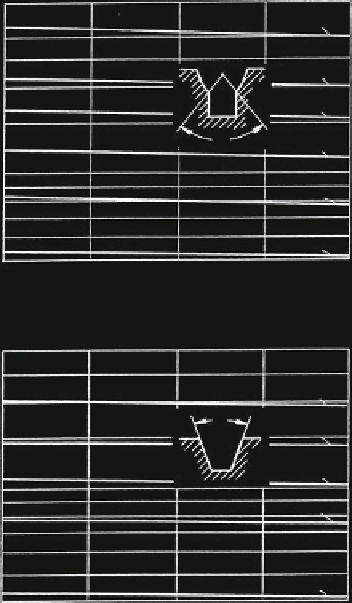Civil Engineering Reference
In-Depth Information
Fig. 3.49 Ratio of the
discarding numbers of
bending cycles in form and
round grooves, Holeschak
(
1987
)
0.40
0.30
ʱ
= 75
°
85
°
0.20
90
°
0.15
ʱ
95
°
0.10
0.08
100
°
0.06
0.05
105
°
0.30
ʳ
= 45
°
0.20
ʳ
42
°
0.15
40
°
38
°
0.10
0.08
0.06
0.05
0.04
35
°
5
10
15
20 x 106
25
−
discrad number of bending cycles N
A,round
In most of the elevators looked at during Holeschak's research programme, the
wire rope runs—in addition to the traction sheave—over one or more deflection
sheaves with round grooves. This means that the wire rope will be ovalised in the
form groove of the traction sheave and then be ovalised in the opposite direction
by running over the deflection sheaves with round grooves. The rope endurance is
therefore not only reduced by the additional bending cycles from the deflection
sheaves but also by this fluctuating ovalisation. The ratios of the discarding
numbers of bending cycles—presented in Fig.
3.49
, Holeschak (
1987
)—are cal-
culated with the Palmgren-Miner-Rule and the known discarding number of
bending cycles for round grooves. Therefore, for elevators with deflection sheaves,
the number of elevator trips up to the discarding of the rope can be evaluated using
Holeschak's results, Fig.
3.49
. In the rare cases of elevators where the ropes only
run over the traction sheave, the discarding numbers of bending cycles will be
somewhat greater than those calculated with the ratios from Fig.
3.49
.
Berner (
2011
) investigates the endurance of wire ropes running over traction
sheaves again under the influence of pressure but additionally under the influence
of the rope slip. For a better possible comparison of the different form grooves,

Search WWH ::

Custom Search